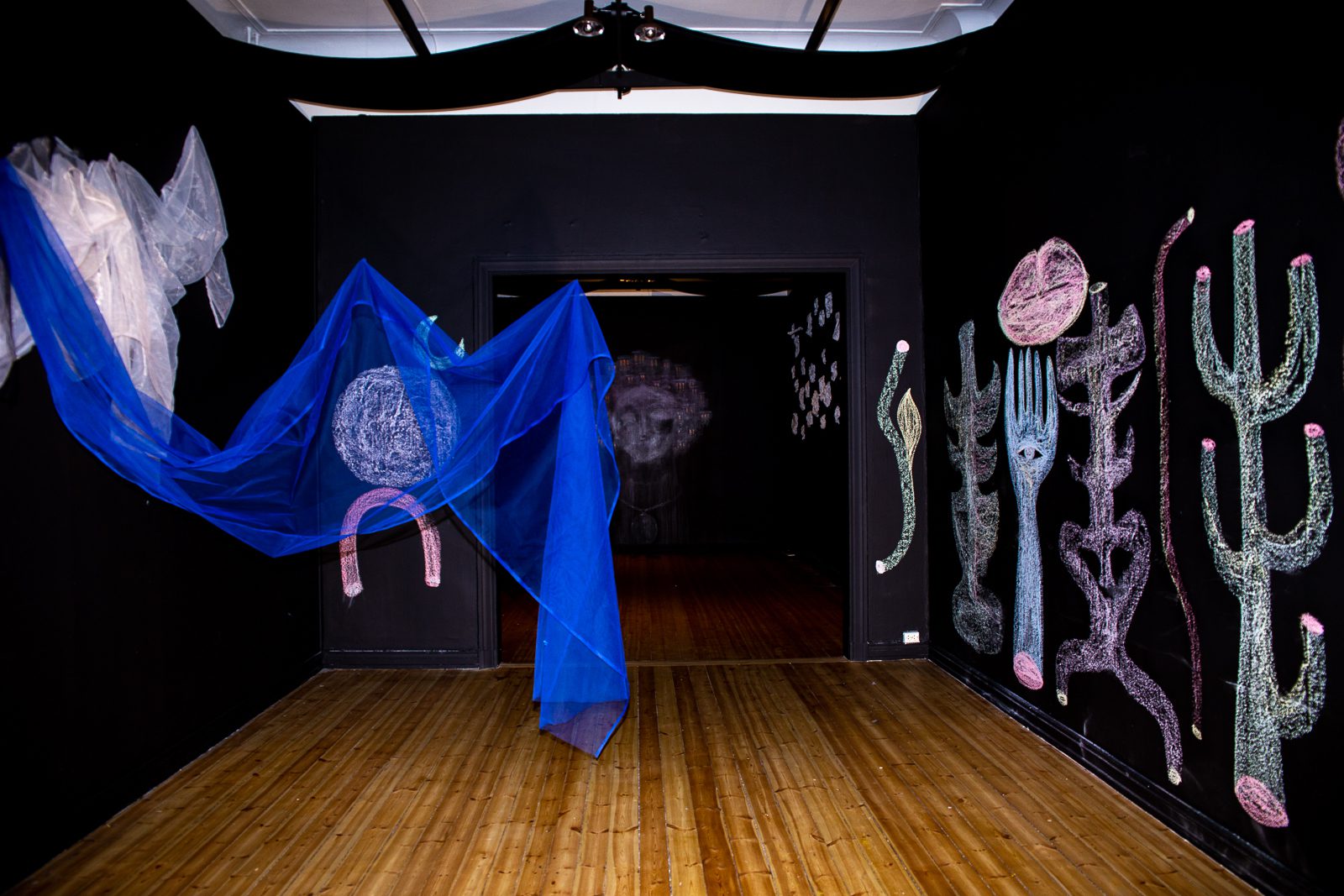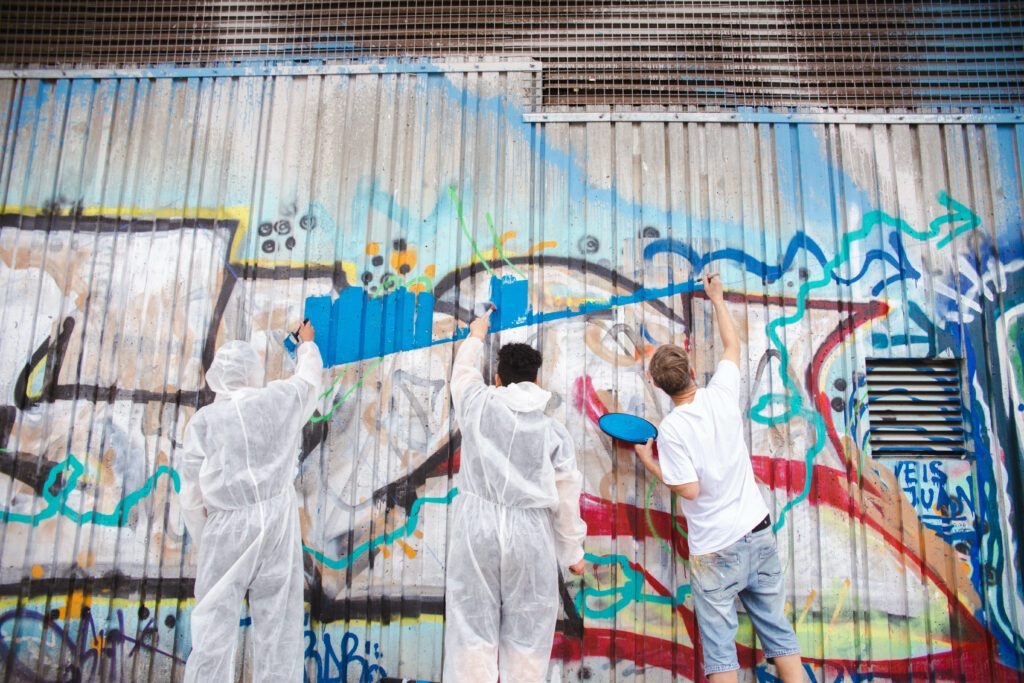We spoke to Nicole Rafiki, the artist behind a series of actions that support African artists in Norway via Congo and South Africa.

Exhibition view "Good Mourning", at the Intercultural Museum in Oslo, 2021.
Contemporary And: In 2017 your non-profit organization Rafik Arts Initiatives launched an annual, bilingual print art journal YPPÈ, and this year it went online. Could you talk about the start of YPPÉ?
Nicole Rafiki: Artists of color from Norway or Scandinavia are pioneers. I cannot tell if there was a visual artist who was a Black female body working in the Norwegian art-field fifty or thirty years ago. Even if they existed, they are yet to be acknowledged within the Norwegian art canon. Creating YPPÉ is about honoring writers of color and changing the narrative in the Nordics concerning works of art by Black and Brown contributors
In Scandinavia right now there is a void of records of artistic works by PoC, and discussion points that are non-white. It takes a lot of work to be taken seriously and valued as the highest level of artistic excellence. The more work done by people of color within the Nordic context, the more challenging it is to be discussed in an art-historical perspective, because it is difficult to find references that correlate. Another issue is that works by PoC artists are sometimes only validated when they come from abroad. Sometimes it takes being discovered outside of Norway, to be taken seriously here – which is a shame. So if I am creating art in such an environment and someone wants to think and write about it critically, where would they get the Norwegian references from and how could they start reflecting around the work? Most often what happens is that references are brought from a British or a US American perspective. That doesn’t necessarily have anything to do with me, or if it does it’s only to an extent. It’s going to be skewed, because the Norwegian context is quite different. These things are not transferable.
C&: Why did you decide to go from print to online, and what do you hope to be the legacy of YPPÉ?
NR: Before YPPÈ went online this year it was a coffee table book. It was made in that format so that people could collect and keep it. However, the pandemic made it challenging to continue making physical copies. In the upcoming digital version in collaboration with the Office for Contemporary Art Norway, we aim to develop critical thinking points and generate a new language to discuss art made not only by Africans but by artists of color in general. This initiative is a way of making sure that our stories become a part of the national grand narrative.
C&: Given the challenges you mention, how has growing up in Norway shaped your practice?
NR: Growing as a Black body in Norway can force your identity into a one-dimensional being. In my experience, I had to choose to be either a Black girl, an African, a foreigner, or a refugee. It makes it hard to feel like you have ownership and agency over your identity, and to claim the parts of you that are Norwegian. Because you are othered by society, you start othering yourself. My practice has helped me see beyond some of these limits.
I have a complex identity due to my life journey so far. My family and I moved from central Africa due to wars in Congo that are really more like world wars than local conflicts. As a result, I was raised in different African countries until I moved to Norway. The whole experience of living in different localities, speaking new languages, and getting familiar with different ways of life was very enriching. That’s why my work is autobiographical. Art has been a tool that helps me navigate through complex realities. My work is inspired by a need to diversify the narratives in Norway, and to unpack the war and colonial baggage that can sometimes follow you all your life.
C&: Your latest exhibition in Oslo, Babidi Mbapite, included photographs made in various locations in Africa, including in South Africa. As an Afropolitan based in Oslo and Johannesburg, what conversations do you aim to have in these places?
NR: The core of the installation alludes to this notion of being hyper visible but also super invisible. It’s like your physical, spiritual, and psychological existence is clouded by people’s judgments and the preconditions of who you are supposed to be. In Scandinavia you encounter a very visual otherness and invisibility as a person living in Black body.
The first part of the exhibition is about how the female body is also becoming more alienated on the African continent. As an African, born on the continent, I sometimes find it very challenging to have dialogue about Blackness. In my opinion, that discussion is rooted in diasporic experiences. In the DRC for instance where the overwhelming majority is Black, taking tribes, clans and ethnic groups as a starting point for discussions on identity and belonging would generate more insight into the socio-economic and political climate of the country than a discussion based on skin color. Adding a layer of gender, coloniality and indigeneity would also add some interesting nuances.

Good Mourning: Healing, Process, And The Affective Community Of Bodies, 2021. Courtesy of Rafik Arts Initiatives.
C&: How did the Rafiki Art Initiatives (RAI) begin, and what projects do you develop?
NR: Although I am an academic, I am very conscious that I am practicing art in the way that my ancestors did. In the Luba culture in which I was raised, the artist is not just an outsider of society providing a product. In pre-colonial times, the Luba artist was at the core of society itself, turning abstract spiritual, philosophical, historic and even mathematical concepts into accessible visual representations for royals and common people. In the same way, I use my artistic platform to facilitate concepts that can benefit individuals in society. I started RAI out of the need for safe spaces and a creative outlet for culturally disenfranchised minority youth in 2013. The idea was to enable young Africans to show and develop their artistic talent. From there, RAI evolved into a fluid structure for and with PoC artists. There is still a need to create space for people to be together in solidarity. That’s what we aim to do, whether our outlet is a collective art making project, a book, a festival or a film etc.
This past summer and the year before, for instance, we had a series of workshops and exhibitions called Good Mourning, at the Intercultural Museum in Oslo. I developed its methodology with clinical psychologist Jemimah Yombo Sigurdsen. It draws on the Congolese mourning ritual Matanga, which emphasizes collective mourning, healing and support. When traumatic events like the killing of George Floyd, they can trigger a set of underlying traumas in people. Ten years ago, on 22 July, there was a terrorist attack in Norway, but it was almost as if some people had the right to mourn and others werejust bystanders. People were very careful in expressing themselves and releasing their emotions in true Norwegian fashion. We gathered a dynamic group consisting of professional artists, youth from the multicultural Grønland neighbourhood of Oslo and members of the public to create artworks together, some of which were exhibited in a gallery space with an extension on a mural in a public space. At the end of the exhibition period the walls are painted over, and the works cannot be retrieved. Art mimics life: sometimes we learn to let go of things no matter how beautiful and precious they are, while living with the memories of other things.
Nicole Rafiki (b.1989,DRC) is an artist, curator, and editor. As an interdisciplinary artist, she uses textile, text, and photography to re-imagine and challenge the stereotypical depiction of spaces, contexts, identities, and the people who are affected by Global Migration.
Sheila Feruzi is an afro-Norwegian screenwriter and film producer currently based in Bergen, Norway. Through the upcoming media company Vuma she is developing podcasts and digital media solutions that will highlight content by multicultural creators in Norway.
LATEST EDITORIAL
More Editorial